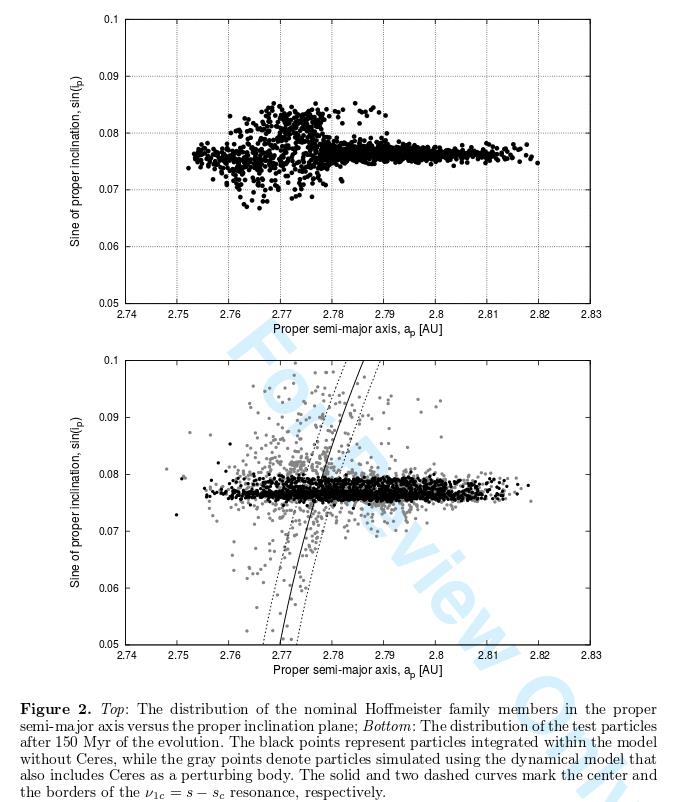Research topics:
The main research topics are the studies of asteroid families in the Main asteroid belt, the interactions of asteroids with the dynamical environment they reside in and their possible transport routes to the Near Earth region.
Having an in-depth understanding of the dynamical behavior of asteroids enables us to unveil the history of the Solar system and make predictions on the evolution of asteroid populations such as NEAs and asteroid families.
Main results:
We have found that the polarimetrically special asteroid family of 729 Watsonia, could have supplied with its fragments the NEA region with a distinct class of asteroids, called “Barbarians” at some point in the past. The most probable time of injection though is much older than the dynamical lifetime of NEAs, so we do not expect any of them at present time.
We have discovered a new mechanism by which main belt asteroids' orbits are perturbed. We have proven that massive asteroids such as Ceres and Vesta, which were previously considered too small to affect the orbits of smaller asteroids, can indeed play the dominant role in the dynamical evolution of the latter. The result we have obtained is that the secular resonances involving these massive bodies, are strong enough to strongly perturbate the orbits of main belt asteroids, contrary to previous belief. As an example we show in the following figure the action of the linear nodal secular resonance with Ceres on the fragments of the asteroid family of 1726 Hoffmeister.

References:
Dynamical properties of theWatsonia asteroid family, Tsirvoulis G., Novakovic B., Knezevic Z., Cellino A., 2014, Proceedings IAU Symposium No. 310, Z. Knežević & A. Lemaitre, eds.
Asteroid secular dynamics: Ceres' fingerprint identified, 2015, Novakovic B., Maurel C., Tsirvoulis G., Knezevic Z., The Astrophysical Journal Letters, 807:L5 (5pp)